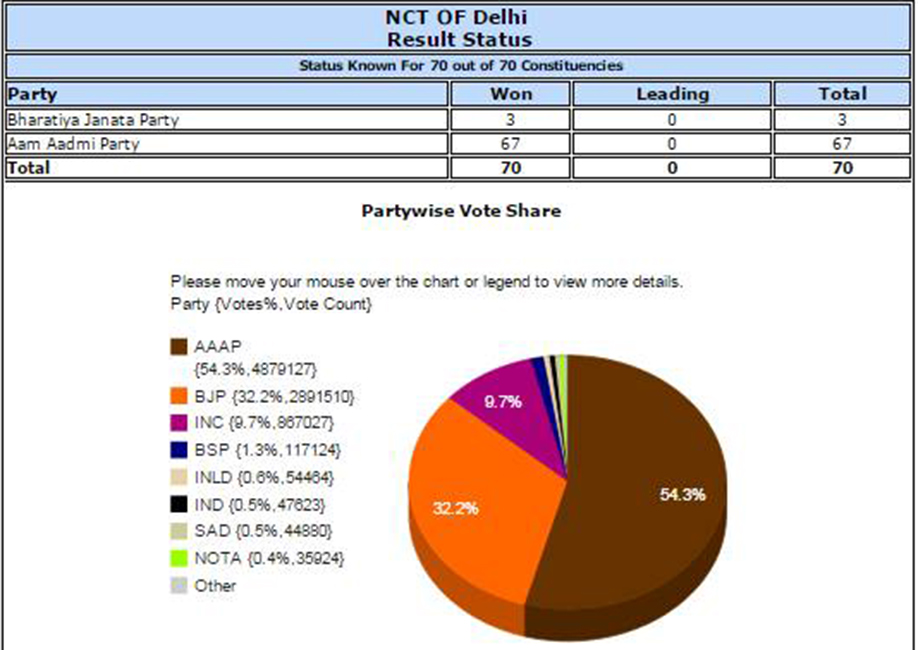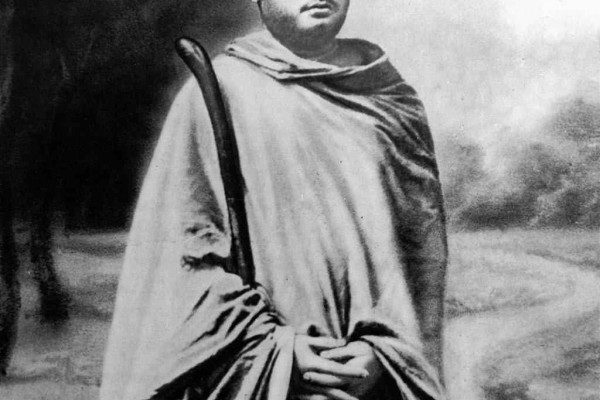Without the huge budget usually required to make their electoral campaign attractive or without the much-hyped Modi wave, AAP and Arvind Kejriwal managed to elicit a spontaneous rush of voters. Some numbers pulled up and analysed by Arunava Sinha…
No sooner had the incredible final results of Delhi elections 2015 come in than Narendra Modi’s champions began to attribute the monumental defeat to the desertion of faithful voters. Theories abounded: small traders had defected to the AAP. The Hindu right had abandoned the party (and, presumably, not voted).
Or, the AAP had only taken votes away from the Congress, and therefore this in no way signalled a shrinking of the BJP’s constituency, but only the abject collapse of the Congress.
And, of course, the cattle class populace had fallen for Arvind Kejriwal’s promises of ‘freebies’, while Modi was treading the uncompromising path of no-subsidy economic development, which would only show results in five years, but what to do, you know what people are like…
All these analyses, made from chairs, obviously carry little or no value. If they had even been presented as forecasts, we might have attributed some foresight to their peddlers. But here the bitterness of defeat presented itself as a diatribe against the perceived betrayal of the devoted.
The question remains, however. Who did vote for the AAP to give the party an extraordinary 67 seats out of 70, the kind of majority no party expects even in its wildest fantasies. If you saw the celebrations on the streets, the joyful faces at neighbourhood gatherings and shops, the exultations at the impromptu parties where people were ecstatically allowed to gatecrash, you could easily assume that everyone had voted for the AAP.
Only, they didn’t, of course. However, a majority did – and in a country with a first past the post electoral system, that’s a remarkable achievement for a winning party. The AAP polled 54.3 per cent of votes cast in the Delhi Assembly elections. Projected on a voter turnout of 67.1 percent, which amounts to 36.4 per cent of the total possible number of votes that could have been cast.
Compare that to the 38.5 per cent of votes polled by the NDA in Election 2014, which, projected on a voter turnout of 66.4 per cent, amounted to 25.4 per cent of the total possible number of votes. Clearly, in both cases, it did not need any sort of majority of votes from the total electorate to win, although the AAP achieved the rare feat of topping 50 per cent of actual votes polled.
So, who didn’t vote for the BJP this time around? One obvious answer is available from the figures of the Delhi Assembly Elections of 2013 and the General Elections of 2014. In the first, when the Modi wave had yet to build in the country, the BJP polled 33.07 per cent of votes, versus 32.1 per cent this time around.
You could conclude – though without statistical accuracy – that almost everyone who voted for the BJP in the 2013 Assembly Elections voted for them again in the 2015 Assembly Elections. However, it’s the figure in the middle that’s most telling. In the General Elections of 2014, with Modi riding a huge, huge wave, the BJP captured 46.1 per cent of the votes, sweeping all seven Parliamentary constituencies – in which are subsumed the 70 Delhi Assembly seats – in the process.
Clearly, the BJP lost 14 percentage points in terms of vote share between then and now.
Now turn to the AAP From 29.49 per cent in 2013, its share in the Parliamentary Elections of 2014 rose to 32.9 per cent. And then, further, to 54.3 per cent this time.
That’s a gain of 21.4 percentage points for the AAP. Where did these votes come from? The Congress dropped from 15.1 per cent in Election 2014 to 9.8 per cent in Election 2015. A loss of 5.3 percentage points. So, the AAP’s gain came from 14 percentage points surrendered by the BJP, the 5.3 percentage points given up by the Congress, and 1.9 percentage points from others. So, even if the Congress had not lost any votes, the AAP would still have gained 15.9 percentage points in its votes, going to 49 per cent versus the BJP’s 32.1 per cent. Most likely, this would have given it a clear majority in the house, if not the kind of overwhelming domination that it actually achieved.
And there you have it. The 14 per cent who did not vote for the BJP in Elections 2013, who voted for the BJP – or, more likely, for Modi – in Elections 2014, and who probably switched to the AAP in Elections 2015.
If those attracted by Modi in 2014 no longer voted for his party in 2015, political pundits can surmise the reasons. It could be disenchantment. It could be, as a taxi-driver puts it, “Let Modi run India, Delhi needs Kejriwal.” It could be genuine faith in AAP over the BJP.
Perhaps the only certainty is that, with a 54.1 per cent share of votes, the AAP clearly commanded votes from more than one economic class amongst Delhi’s citizens. Rich or poor, they united behind Kejriwal in an unexpected and dramatic way. And that is an extraordinary achievement for a party that fought the polls without the kind of huge budgets that its rivals had access to.
This feat alone could change the face of electoral contests in India.














